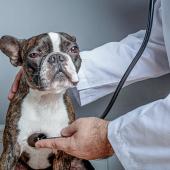Bear Spray vs. Guns
Which one is better?
*Approximate number of scoville heat units in a Habanero pepper = 300,000*
*Approximate number of scoville heat units in bear pepper spray = 3.2 million*
Gary Clutter, a big-game hunter from Bozeman, had a face-to-face encounter with a grizzly while hunting a few years ago, and bear spray saved him from a dire situation. "I caught the bear full in the face when it was four feet away,” Clutter says. “It was like it hit a wall. The grizzly turned and ran so fast toward her cub she ran over it."
No deterrent is 100% effective against an attacking grizzly, but compared to other countermeasures, including firearms, bear spray has demonstrated the most success. In scientific studies conducted by University of Calgary grizzly-bear expert Stephen Herrero, bear spray was found to be 94% effective in deterring aggressive bears.
Unlike a gun, bear spray does not have to be aimed precisely to stop a charging bear. The spray makes a fog in the air, causing severe irritation in the eyes, nose, mouth, throat, and lungs, temporarily disabling the bear. According to experts, there is no better way to stop an attack by an aggressive grizzly.
Even more recent is a 2008 study led by BYU wildlife professor Tom Smith (colleagues included the National Park Service and U.S. Minerals Management Service researchers), which looked at over 20 years of bear spray incidents in Alaska and found that “98% of persons carrying [bear pepper spray] were uninjured after a close encounter with bears.”
The active ingredients in bear spray affect the upper respiratory system and trigger involuntary eye closure and intense but temporary burning sensation of the skin and a burning, tearing, and swelling of the eyes. If inhaled, the respiratory tract becomes inflamed, resulting in swelling of the mucous membranes lining the breathing passage and temporarily restricting breathing to short, shallow breaths. The effects usually wear off in 30 to 45 minutes, according to the website of bear-spray manufacturer Counter Assault.
When shot with a gun, the bear’s adrenaline works in its favor; it can be shot several times and still live long enough to attack the shooter or someone else in the area. In fact, the Lewis and Clark expedition recorded that a bear was shot six times before dying. With bear spray, the bear’s adrenaline works in favor of the human: as the bear’s respiratory rate increases, the spray moves more quickly through the system, increasing the reaction.
Also, gun users must be “expert shots” to hit and kill a 400-plus-pound, slobbering, snarling grizzly running toward them at 35 mph. Shooting but not killing a bear also puts others at risk, as injured bears are dangerous bears and tend to act aggressively toward humans.
When buying bear spray, the container should say the product is made for stopping or preventing bear attacks. Be sure the canister contains at least 7.9 ounces of spray with 1%-2% capsaicin/capsaicinoids, has a spray minimum of 25 feet and six seconds, and is EPA registered.
Bear spray is easy to use, but you should still familiarize yourself with it before hiking, hunting, fishing, or camping in bear country. Each person should carry a canister and keep the spray in an easily accessible place. The basic idea behind using the spray is this: When the bear gets within 50 feet, fire a warning blast. If it gets within 20-30 feet, fire half-second to two-second blasts in succession, aiming down in front of bear. Do not run, but leave the area once the bear has stopped to clean itself. Read the manufacturer’s label on the canister for storage, disposal, and proper use instructions.
Science and experience has shown us time and time again that bear spray is more effective than a gun when encountering a grizzly in the backcountry. If you want to come out alive, reach for your bear spray, not your gun.













